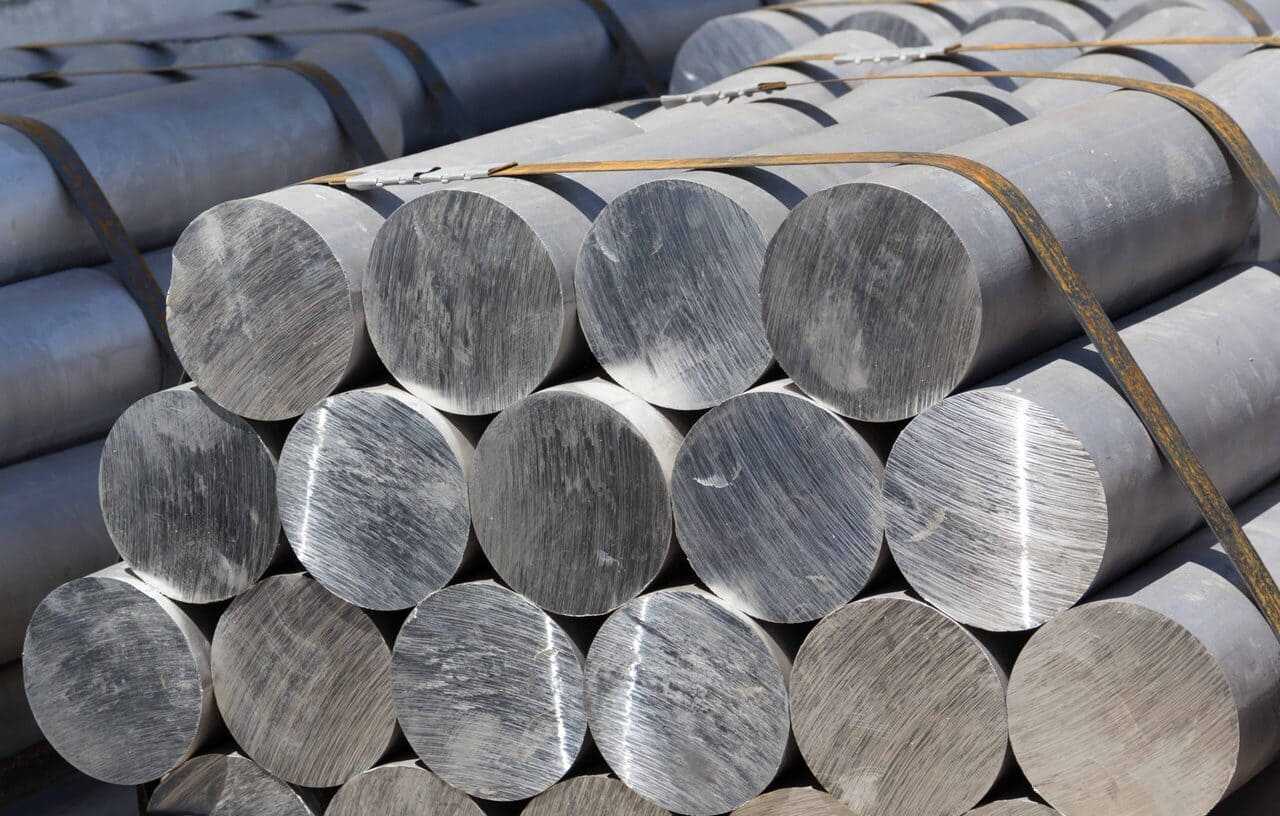6061 aluminum has several unique properties that make it suitable for many general purpose applications, but one of the most important is its low density. Not only does the low density of 6061 aluminum give it the formability for easily designing complex structures, but it also makes it an ideal material for hydroforming and QPF (Quick Plastic Forming) operations.
Below, we dive further into the importance of 6061 aluminum’s low density and why this material property makes 6061 aluminum ideal for use in a wide variety of applications and industries.
The Density of 6061 Aluminum
The density of 6061 aluminum is 2.7 g/cm3, close to that of pure aluminum. As a comparison, the density of some other standard materials are listed below:
- Magnesium: 1.8 g/cm3 (Elektron 21)
- Titanium: 4.43 g/cm3 (Ti-6Al-4V)
- Stainless steel: 8.0 g/cm3 (AISI 304L)
- Lead: 11.33 g/cm3
- Copper: 8.94 g/cm3
As density indicates mass per unit volume, it is easy to understand that 6061 aluminum is comparatively softer than titanium and stainless steel. However, it can be strengthened using various heat treatment processes.
The factor that significantly affects the density of 6061 aluminum is its low atomic number density (representing the number of atoms present per cubic centimeter volume of material). The mass-to-volume ratio of material also decides its density, and aluminum has a comparatively lower mass-to-volume ratio. There are a few other metals that have less mass-to-volume ratio than aluminum; however, these metals can not be used in automobile applications for other reasons (e.g., high chemical reactivity).
Low-density materials have always been the focus of transformative research programs to substantially reduce system weight and enhance performance and function. The aerospace industry believes that if it has structure and rises above the ground, material density is important. When it comes to aviation, material density impacts payload capacity, range, cost, agility, survivability, and environmental impact. In this regard, 6061 aluminum is very desirable.
However, when we factor in corrosion and strength in addition to weight (density) for a design, it is easy to get confused between the options available. For instance, grade 5 titanium is two-thirds heavier than 6061 aluminum, but only a small volume of it is needed to attain the same strength you would get with 6061 aluminum. On the other hand, 6061 aluminum has a low melting point compared to titanium to offer excellent design flexibility and is much cheaper than a block of titanium. Thus, when cost is a major factor and high temperatures are not a concern, 6061 alloys would be an ideal choice over grade 5 titanium.
Benefits of 6061 Aluminum’s Low Density
The biggest advantage of 6061 aluminum is that it is significantly lighter than steel, offering a 30-50% mass reduction compared to steel. This is especially important in the automotive industry—if 10% of a vehicle’s mass is removed, its fuel economy can be improved by approximately 8%.
Aluminum is not only preferred in the automotive industry because it is a lighter alternative to heavy steel cars, but it is also easier to melt and shape. This critical attribute is beneficial when casting parts for the engine, which represents much of the car’s weight.
6061 aluminum can be melted at very low temperatures thanks to its low material density. Melted aluminum can be used to easily transform the bodies of automobiles and airplanes into the desired shapes you couldn’t otherwise make.
Along with its low density, 6061 aluminum’s formability makes it an ideal material for hydroforming and QPF operations. These methods are useful for forming aluminum into any particular shape needed without welding.
In the hydroforming process, aluminum blanks up to 32 inches are pressed against a flexible diaphragm operated via a hydraulic pressure up to 10,000 psi. The resulting pressure helps the aluminum form into the precise shapes of the die in less than two minutes. The process saves energy required for additional welding and rework.
The QPF method takes advantage of aluminum’s low-density feature to quickly melt the metal at an elevated temperature and form parts. This is hard to achieve with any other metal. Aluminum is pressed against the steel die cavity at an air pressure of 350-450 psi to create the desired shape.
 Aside from its uses in the automotive and aerospace industries, 6061 aluminum has a wide range of applications, including in baseball bats. Aluminum bats are lighter than wood and help players produce more bat speed as they swing. 6061 aluminum is also popular in astronomy, as it’s often used as a coating for telescope mirrors due to its durability and cheaper maintenance costs.
Aside from its uses in the automotive and aerospace industries, 6061 aluminum has a wide range of applications, including in baseball bats. Aluminum bats are lighter than wood and help players produce more bat speed as they swing. 6061 aluminum is also popular in astronomy, as it’s often used as a coating for telescope mirrors due to its durability and cheaper maintenance costs.
Purchase 6061 Aluminum From a Reliable Metal Supplier
Industrial Metal Service has been supplying metals to the San Francisco Bay Area and nationwide for more than two decades. Our inventory of new, mill-sourced metals and verified remnants includes 6061 aluminum plate stock, bar stock, and round stock. We also carry a wide variety of other metals, such as titanium, copper, and steel. To receive machine-ready 6061 aluminum, take advantage of our metal sawing services. Our MetlSaw NF12-T12 quickly cuts aluminum alloys with the highest precision.
 Angle
Angle Cast Plate
Cast Plate Diamond Plate
Diamond Plate Flat Bar
Flat Bar Plate
Plate Round Bar
Round Bar Square Bar
Square Bar Square Tubing
Square Tubing Round Tubing
Round Tubing Angle
Angle Channel
Channel Diamond Plate
Diamond Plate I Beam
I Beam Round Bar
Round Bar Sheet
Sheet Square tubing
Square tubing Round Tubing
Round Tubing Rectangular Tubing
Rectangular Tubing Plate
Plate Rectangular Bar
Rectangular Bar Rectangular Tubing
Rectangular Tubing Round Bar
Round Bar Sheet
Sheet Square Bar
Square Bar Square Tubing
Square Tubing
